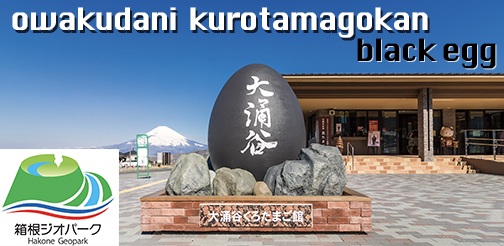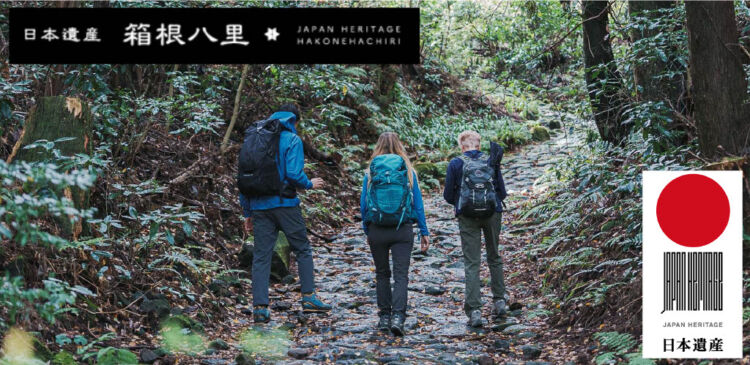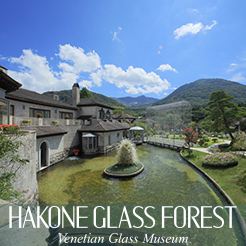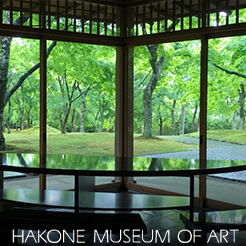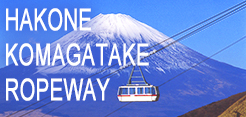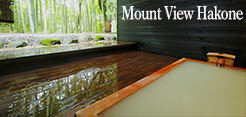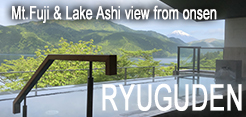Pola Museum of Art is an art museum located in a national park in Sengokuhara area of Hakone, near Gora. The museum has a wide range of collection from Impressionism such as Monet and Renoir to contemporary art. There hold inspiring and stimulating exhibitions focusing on various historical, cultural and current artists or topics, harmonizing its collections and surrounding nature.
The Pola Museum of Art is nestled in a forest of beech trees and hidden in the wooded mountains of Hakone. The award winning modern architecture blends finds a beautiful contrast and harmony with the surrounding nature. The museum exhibits a world class collection of Western and Japanese paintings, ceramics, and cosmetic utensils, with a focus on impressionist paintings. A visit here makes for a wonderful day of art, culture, and nature. After viewing the works of Monet, Renoir, Van Gogh, Cezanne, Picasso, and more, visitors can relax at the museum store, restaurant, cafe, or take a stroll among the outdoor sculptures in the Nature Trail around the museum. The museum is built nestled in the mountain in the midst of trees, based on the concept of a “symbiosis between Hakone’s nature and art.”
The highlight of the Pola Museum of Art is the impressive collection of modern Western paintings, with a particularly high quality collection of impressionist works by Monet, Renoir, and others, which is one of the largest in Japan, with approximately 400 works in its collection.
The painters of the generation after the Impressionists are also in its collection, the painters of the Ecole de Paris, a group of foreign painters who gathered in Paris in the 1920s. Leonard Foujita, Wassily Kandinsky, a pioneer of abstract painting, and the Surrealist painters are among those influenced by the Impressionists. In recent years, they are expanding its scope to contemporary art such as Roni Horn and Gerhard Richter etc.
Photo: Ken KATO
The Pola Museum of Art was opened in 2002 in Hakone, Japan. Hakone is a mountainous area 1 hour south of Tokyo and easily accessible by train. The location was chosen as a place to incorporate art with the lush mountain surroundings of nature. The collection was assembled by Suzuki Tsuneshi (1930-2000), the second-generation founder of POLA, a Japanese cosmetics company. The collection took over 40 years to amass and comprises a total of 10,000 items, including Western paintings, Japanese Western paintings, Japanese prints, Oriental ceramics, glass art, and cosmetic utensils from all over the world. The core of the collection is Western paintings from the Impressionists, through the École de Paris, to 20th century paintings by Picasso and Kandinsky, etc. In 2017, the Atrium Gallery was opened to exhibit contemporary art.
Architecture of Pola Museum of Art
Hakone is a mountainous region just south of Tokyo famous for hot springs, nature, and elegant ryokan and hotels. An award winning architectural design is hidden in the mountains along with a number of architectural masterpieces in the form of ryokan (historic Japanese inns), hotels, private homes, and museums. One of Hakone’s most intriguing structures is the Pola Art Museum, found tucked into the forested mountains of the highlands of Sengokuhara, Hakone.
The museum is a refined glass and concrete based structure, striking yet balanced with its natural surroundings.. Surely, this is what the engineers and designers strived for when they planned the construction of a building that embodies “symbiosis between Hakone’s natural beauty and the works of art.” Built by famed Japanese design firm Nikken Sekkei (Futur Camp Nou, Ritz Carlton Kyoto, Tokyo Tower), the building is made up of 2 floors above ground and 2 floors below ground. The museum was constructed on an area cut into the gentle mountain slope and most of the building is hidden from sight, allowing the building to blend into the natural surroundings.
Constructed in the Fuji Hakone Izu National Park, the surrounding nature and environment welcomes visitors even inside through the large use of glass and natural lighting. Visitors must cross a short bridge to reach the entrance to the building, which is actually on the highest level. The airy and well lit entrance guides visitors to the ground floor for ticketing, then lower to view the art collections. The natural lighting gets softer as you travel deeper into the soft greys of concrete and smoky glass and are welcomed into an area of world class art.
The Pola Museum of Art experience isn’t limited to only in the building itself. The art experience stretches out into the surrounding forest and backwoods, where Nature Trail outside the museum lets you enjoy outdoor sculptures in the National Park. A visit to the Pola Museum of Art is an experience for all your aesthetic senses.
Open Time 9:00am to 5:00pm (last admission 4:30pm)
Price Adults ¥1800 / 65 and over ¥1600 / High school and universtity students ¥1300 / Junior high and younger Free
Address 1285 Kozukayama, Sengokuhara, Hakone-machi
| Open Time | 9:00am to 5:00pm (last admission 4:30pm) |
|---|---|
| Price | Adults ¥1800 / 65 and over ¥1600 / High school and universtity students ¥1300 / Junior high and younger Free |
| Address | 1285 Kozukayama, Sengokuhara, Hakone-machi |




